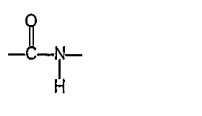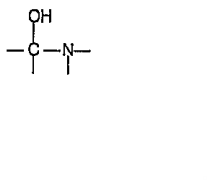What is peptide bond?
Step-by-Step Solution:
1. Definition of Peptide Bond: A peptide bond is a specific type of chemical bond that connects two amino acids together.
2. Formation of Peptide Bond:
- The peptide bond is formed between the carboxyl group (–COOH) of one amino acid and the amino group (–NH2) of another amino acid.
- During this process, a molecule of water (H2O) is released, which is a result of a dehydration synthesis reaction.
3. Structure of the Peptide Bond:
- The bond itself is a covalent bond, meaning that it involves the sharing of electrons between the atoms involved.
- The resulting structure after the formation of a peptide bond is a dipeptide, which can further link with other amino acids to form polypeptides and proteins.
4. Significance of Peptide Bonds:
- Peptide bonds are crucial for the formation of proteins, which are essential for various biological functions in living organisms.
- The sequence and number of amino acids linked by peptide bonds determine the structure and function of the protein.
Summary:
A peptide bond is a covalent bond formed between the carboxyl group of one amino acid and the amino group of another amino acid, resulting in the formation of a dipeptide and contributing to protein structure.
---
- The peptide bond is formed between the carboxyl group (–COOH) of one amino acid and the amino group (–NH2) of another amino acid.
- During this process, a molecule of water (H2O) is released, which is a result of a dehydration synthesis reaction.
- The bond itself is a covalent bond, meaning that it involves the sharing of electrons between the atoms involved.
- The resulting structure after the formation of a peptide bond is a dipeptide, which can further link with other amino acids to form polypeptides and proteins.
- Peptide bonds are crucial for the formation of proteins, which are essential for various biological functions in living organisms.
- The sequence and number of amino acids linked by peptide bonds determine the structure and function of the protein.
A peptide bond is a covalent bond formed between the carboxyl group of one amino acid and the amino group of another amino acid, resulting in the formation of a dipeptide and contributing to protein structure.
Topper's Solved these Questions
- BIOMOLECULES BOOK - MODERN PUBLICATIONCHAPTER - BIOMOLECULES EXERCISE - REVISION EXERCISES (Long Answer Questions )
12 Videos
- BIOMOLECULES BOOK - MODERN PUBLICATIONCHAPTER - BIOMOLECULES EXERCISE - COMPETITION FILE (OBJECTIVE TYPE QUESTIONS) (MULTIPLE CHOICE QUESTIONS (MCQs)
50 Videos
- BIOMOLECULES BOOK - MODERN PUBLICATIONCHAPTER - BIOMOLECULES EXERCISE - REVISION EXERCISES (Very Short Answer Questions)
36 Videos
- BIOLOGICAL CLASSIFICATIONBOOK - MODERN PUBLICATIONCHAPTER - BIOLOGICAL CLASSIFICATIONEXERCISE - CHAPTER PRACTICE TEST
16 Videos
- BODY FLUIDS AND CIRCULATION BOOK - MODERN PUBLICATIONCHAPTER - BODY FLUIDS AND CIRCULATION EXERCISE - Chapter Practice Test
15 Videos
Similar Questions
Knowledge Check
−O∣∣C−NH−(peptide bond). Which statement is incorrect about peptide bond?
AC - N bond length in proteins is longer than usual bond length of N - C bondBSpectroscopic analysis show planar structure of −C∣∣O−NH−(group)CC - N bond length in proteins is smaller than usual bond length of C - N bondDNone of theseWhich is the correct representation of peptide bond?
A B
B C
C DNone of these
DNone of these
What is a peptide bond? How is it formed.
View SolutionWhat is a peptide bond or linkage? Distinguish between a peptide, oligopeptide polypeptide and protein.
View SolutionWhat are peptide bonds?
View Solution(a) Write the Haworth structure of maltose.
(b) What is peptide linkages? How many peptide bonds are present in a tetrapeptide?
(c) Name the hormone which regulates blood sugar level in the body.
View SolutionWhat is peptide linkage? How is tripeptide formed?
View SolutionHow is a peptide bond formed ?
View Solution
